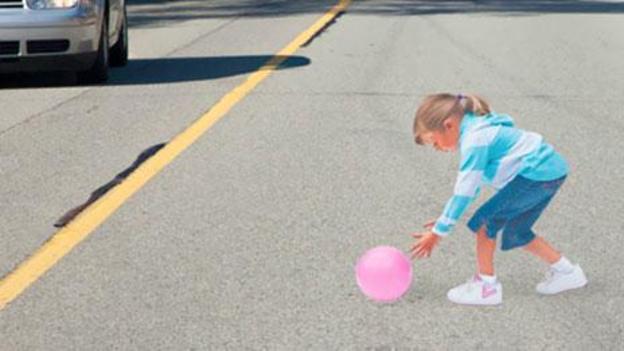I love optical illusions and this one in Iceland (that I came across thanks to Richard Kaufman) seems to suggest a pedestrian crossing that is floating on air. But it is not just for fun. Such trompe l’oeil (“fools the eye”) illusions claim to have the benefit of causing drivers, puzzled by what they see ahead of them, to slow down when approaching them, increasing the safety of street crossers.
I am not so sure about this. It seems to me to have some serious downsides. The first is that drivers who encounter them for the first time might slam on the brakes in alarm, causing rear-end collisions. Another is that once drivers know it is an illusion, they may just start to ignore them and breeze through as before. Here is a video of the above crossing and at the 59 second mark, a van sped through the above crossing without slowing down. The driver, in addition to not being courteous to pedestrians, must have been that way before.
The third is the most dangerous and that is the inverse of what is being sought, that too many such illusions might cause drivers to think that something real is an illusion and ignore it, and that could be fatal for illusions like this child running after a ball in the street.
If I encountered this illusion, I would definitely stop, risking being rear-ended. Even after I realize that it is an illusion, it would make me queasy to drive over it. It would just seem wrong.
You can read more about the use of such road visual illusions for road safety purposes in this article.
All in all, I think it is dangerous to make drivers unsure of what is real and what is an illusion.



Fake Views!!!
It’s a bit misleading to blame the driver for going through without slowing down when there were no pedestrians in the crosswalk at the time.
I used to have neighbours with a pair of red lights in their yard, next to the roadway, to make people down. Whenever visibility was limited they resembled brake lights and gave the false impression that the road was straight rather than curved. People would drive into their yard in the fog or snow thinking that they were following another vehicle on a safe path.
The floating crosswalk would work for me.
A visual cliff would be more effective than the little girl.
I have heard of car parking buildings trialling illusions resembling hovering writing saying “SLOW” and similar, only to have to cancel the trials early due to increased car accidents caused by startled drivers.
@ryangerber:
But a purported effect of the illusion in front of the driver is that it supposed to cause the driver to slow down from confusion at what they’re seeing.
Still…
I tried searching for driving rules in Iceland (specifically, whether it is required to slow down at pedestrian crossings), and couldn’t find anything. Most of what is available seems to be written under the assumption that the driver will be on the ring road touring rather than driving in urban areas. The closest I could find:
https://www.arctic.is/driving-in-iceland/
Here’s a page with more information about the 3-D crossing:
https://www.mnn.com/green-tech/transportation/blogs/eye-popping-floating-crosswalk-iceland-slows-traffic
Specifically:
OK, one more link:
https://freethoughtblogs.com/singham/2017/12/16/using-optical-illusions-as-traffic-regulators/
So it’s not just a desire to slow down traffic approaching the crossing, but a desire to slow down traffic on the narrower streets of the town in general. But apparently, they don’t want to reduce the legal speed limit on those street (and inflict fines on those going faster) — just encourage slowing down.
A trompe l’oeil like this will only work from one direction. Maybe they are only trying to discomfit drivers entering town from a faster road.
And, once you get closer, the illusion disappears. This could be good because the driver is now free to concentrate on the other road users instead of the crossing. Or it could encourage drivers to avert their attention from the far+mid distance and solely concentrate on the short distance. Obviously such a focus on only the close proximity is bad (but worryingly common with inexperienced drivers and tired drivers who haven’t yet realised they’re tired.
New optical illusion reported
https://www.ncbi.nlm.nih.gov/pubmed/29204264